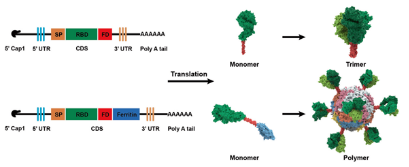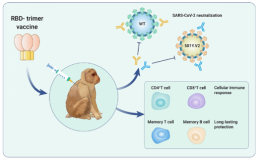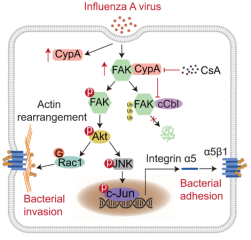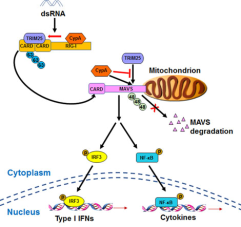
Liu, Wenjun
刘文军
Institute of Infectious Diseases
Senior Principal Investigator
liuwj@szbl.ac.cn
Timeline
-
Present
Shenzhen Bay Laboratory Senior Principal Investigator
-
Present
CAS Key Laboratory of Pathogenic Microbiology of Immunology, Institute of Microbiology, Chinese Academy of Science Deputy Director
-
2011 - 2021
Biological safety level-3 (BSL-3) Laboratory of Institute of Microbiology, Chinese Academy of Sciences Director
-
2004 - Present
Institute of Microbiology, Chinese Academy of Science Professor
-
2004 - Present
University of Chinese Academy of Sciences Professor, Doctoral Supervisor
-
2000 - 2004
Genzyme Corporation Senior Scientist
-
1996 - 2000
Howard Hughes Medical institute/Oklahoma Medical Research Foundation Postdoctoral Fellow
-
1996
University of Florida Ph.D
Research Areas
His lab focuses on the molecular mechanisms of virus infection, the interactions of viruses with host cells, antiviral immunity, vaccine design, and development of antiviral drugs. The research works are designed to increase fundamental knowledge as well as to facilitate the development of new approaches to control of viral infection. In his research area, Dr. Liu has published more than 100 research articles and obtained 40 patents.
Highlights

We developed an mRNA vaccine based on the trimeric receptor-binding domain (RBD) of the SARS-CoV-2 spike (S) protein fused to ferritin-formed nanoparticles (TF-RBD), which produce broad-spectrum neutralizing antibodies against Alpha (B.1.1.7) and Beta (B.1.351) variants. Signal Transduct Target Therapy , 2021.

We constructed a trimeric SARS-CoV-2 receptor-binding domain (RBD) subunit vaccine candidate, which provide long-lasting, broad, and significant immunity protection in nonhuman primates. The Innovation, 2021.

We show influenza A virus-induced CypA promotes group A Streptococcus coinfection via the FAK/Akt pathway. These data reveal another way for IAV to promote bacterial coinfection and provide a promising therapeutic target for the secondary bacterial. Cell Reports, 2021.

Our findings reveal an essential role of CypA in boosting RIG-I-mediated antiviral immune responses by controlling the ubiquitination of RIG-I and MAVS. ELife, 2017.
Honors
• The first prize of Science and Technology Award of Chinese Preventive Medicine Association in 2017
• The first prize of Science and Technology Contribution Award of Liaoning Province Animal Husbandry and Veterinary in 2016
• The first prize of Science and Technology Award of Shandong Province in 2015
• One Hundred Person Project of the Chinese Academy of Sciences in 2004
Selected Publications
1. Sun WQ, He LH, Zhang H, Tian XD, Bai ZH, Sun L, Yang LM, Jia XJ, Bi YH, Luo TR, Cheng G, Fan WH*, Liu WJ*, Li J*. The self-assembled nanoparticle-based trimeric RBD mRNA vaccine elicits robust and durable protective immunity against SARS-CoV-2 in mice. Signal Transduct Target Therapy 2021, 6(1):340.
2. Yang LM*, Tian DY, Han JB, Fan WH, Zhang Y, Li YL, Sun WQ, Wei YQ, Tian XD, Yu DD, Feng XL, Cheng G, Bi YH, Zheng YT*, Liu WJ*. A recombinant receptor-binding domain in trimeric form generates protective immunity against SARS-CoV-2 infection in nonhuman primates. The Innovation 2021, 28, 2(3):100140.
3. Bai XY, Yang WX, Luan XH, Li HZ, Li HQ, Tian DY, Fan WH, Li J, Wang BN, Liu WJ*, Sun L*. Induction of cyclophilin A by influenza A virus infection facilitates group A Streptococcus coinfection. Cell Reports 2021, 35, 109159.
4. Sun YP, Jiang JW, Tien P, Liu WJ*, J Li*. IFN-λ: A new spotlight in innate immunity against influenza virus infection. Protein & Cell 2018, 9(10):832-837.
5. Liu W#, Li J#, Zheng WN, Shang YL, Zhao ZD, Wang SS, Bi YH, Zhang S, Xu CF, Duan ZY, Zhang LF, Y Wang, Jiang ZF, Liu WJ*, Sun L*. Cyclophilin A-regulated ubiquitination is critical for RIG-I-mediated antiviral immune responses. Elife 2017, 6:e24425.












